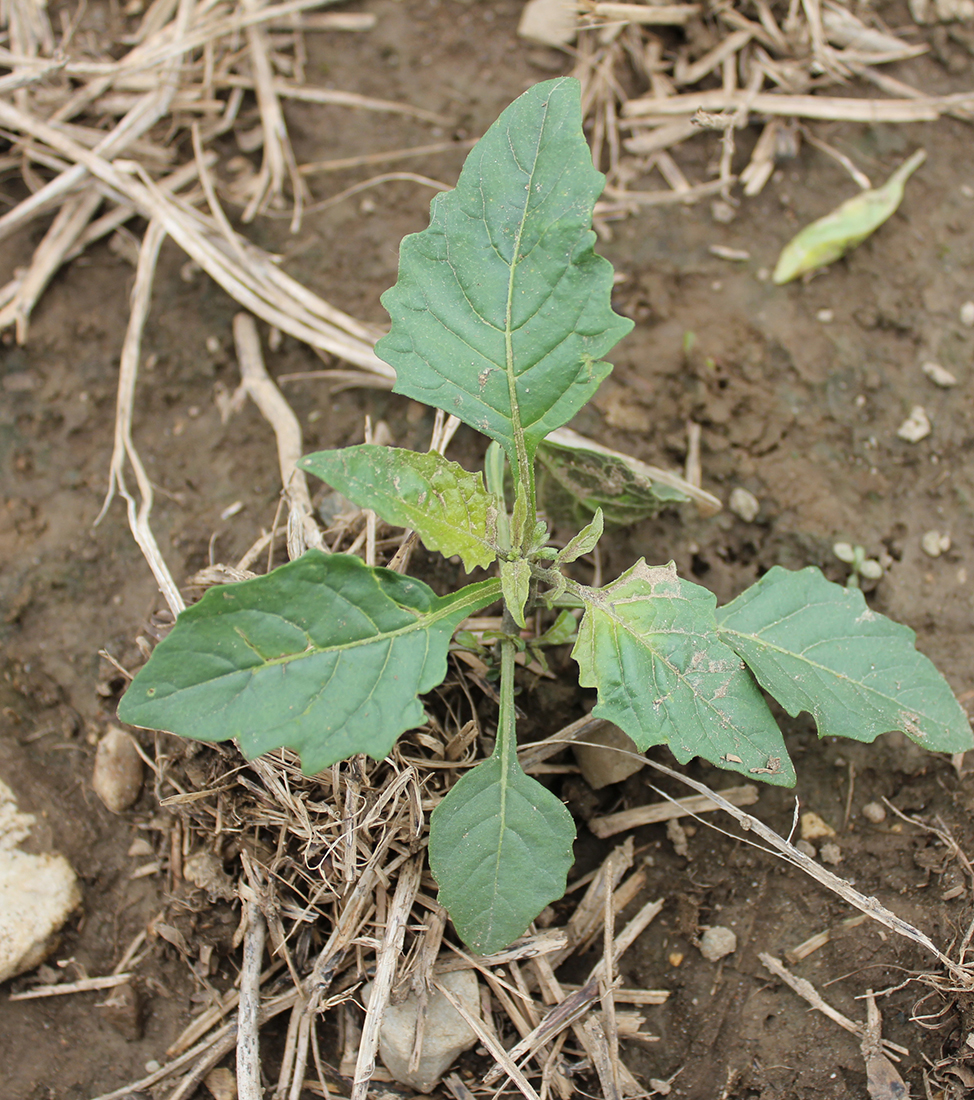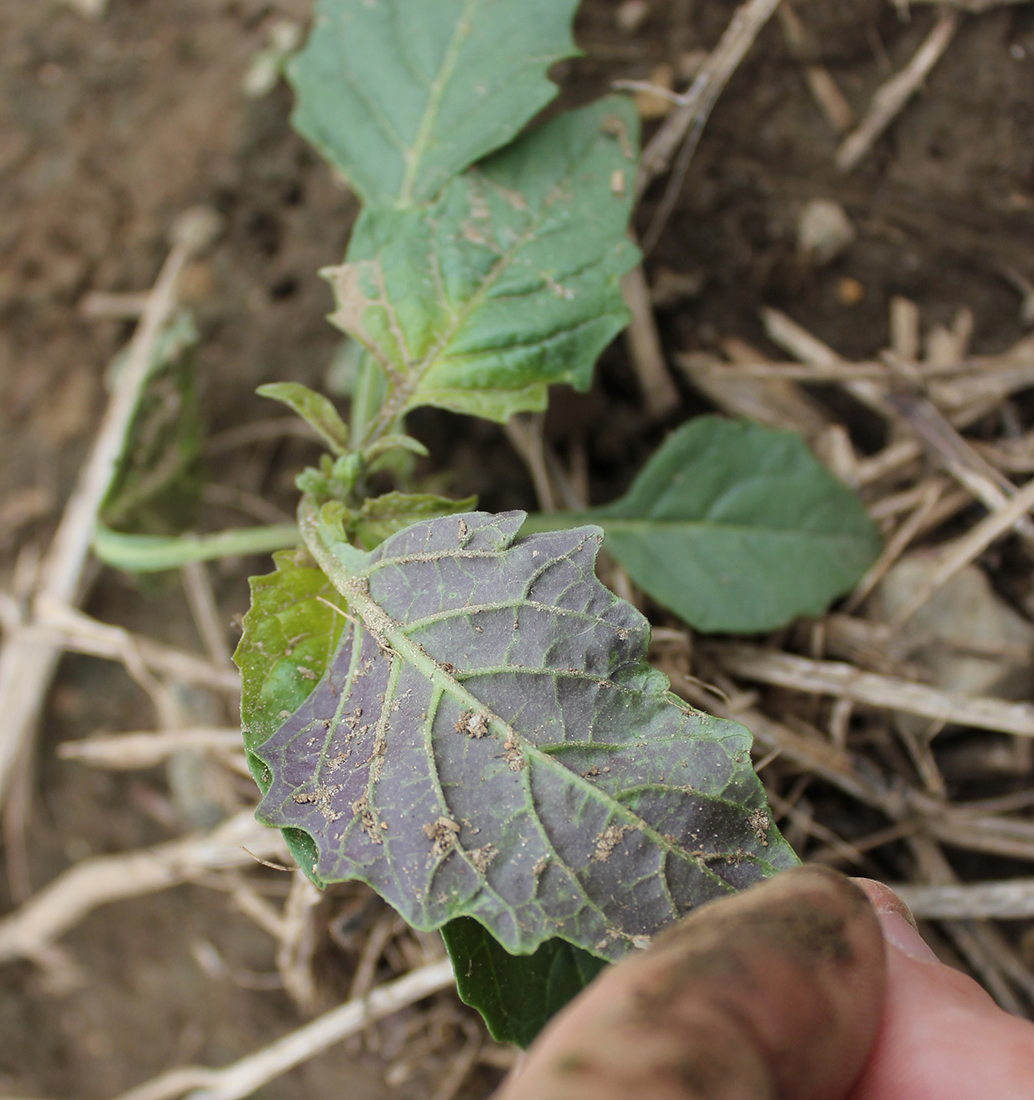Eastern Black Nightshade
Poisonous when certain plant parts are consumed.
- Nightshade or Potato (Solanaceae family):
- Solanum ptychanthum Dunal
- EPPO code:
- SOLPT
- Other names:
- Black nightshade, deadly nightshade
Species information
- Lifecycle:
- Annual.
- Propagation:
- Reproduces by seed.
- Range and habitat:
- Can be found throughout eastern Canada and is most commonly found on loam and clay loam soils although it exists in all soil types.
- Competitiveness:
- One of the less competitive weeds, however it negatively affects crop quality as the berries stain crop seed.
- Resistance:
- Populations of this weed exist that are resistant to Group 2 herbicides (for example, imazethapyr).
- Toxicity:
- The mature berries have the highest concentration of solanine, a glycoalkaloid poison. In general, feeding experiments have shown that toxic affects occur when 25% or more of a cow’s forage intake is comprised of nightshade (Anonymous, 2015).
Identification clues
Leaves
- Cotyledons:
- Oblong or diamond shaped with hairy margins.
- Young leaves:
- Round to oval, the underside usually being purple and the leaf margins being entire to slightly toothed.
- Mature leaves:
- margins are wavy toothed, leaf shape is round to oval and underside is usually purple.
Mature plant
- Stem:
- Erect, branched and mostly hairless; young stem is green but later turns purplish/green
- Flowers:
- Often 2–5 flowers grouped together; the petals are white and unite into a star shaped corolla with 5 sharp lobes; the anthers are united and form a yellow column in the center; flowers from June until late autumn.
- Fruit:
- Berries are green at first, but then turn black as they mature; when squeezed the berries will exude a purplish placenta containing several (~20–70) small flat seeds.
Often mistaken for
I know it's not Pigweed species because young eastern black nightshade plants have pointed, almost diamond shaped cotyledons compared to the linear cotyledons of pigweed species. The underside of eastern black nightshade leaves are typically a deep purple compared to the violet underside of pigweed species. The older leaves have wavy toothed margins whereas pigweed species lack the wavy toothed margins.
I know it's not Hairy nightshade because the leaf surface and stems of eastern black nightshade are hairless and the mature berries are black compared to the mature brown berries and hairy plant parts of hairy nightshade.





Updated: January 16, 2023
Published: January 16, 2023